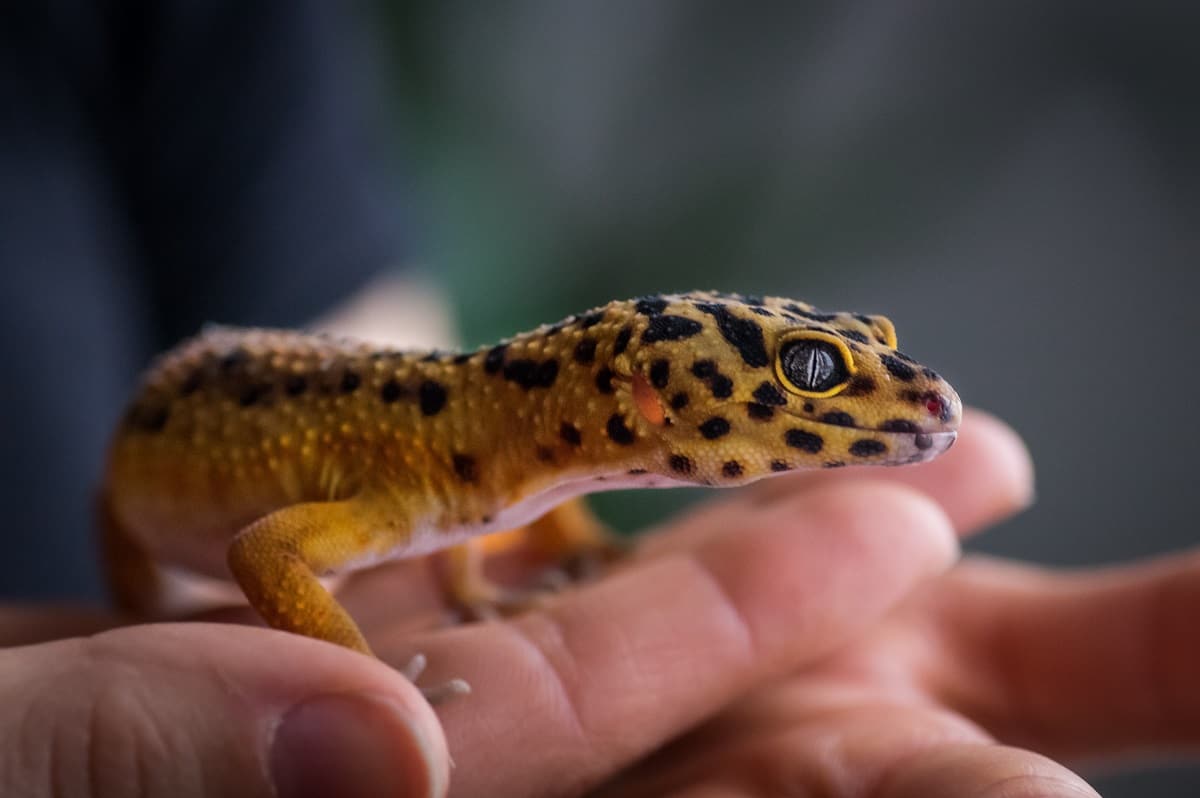You may assume that everybody knows how to pick up their own pets, but that may not be the case with a leopard gecko. These animals may very easily drop their tails if you are not careful when you pick them up to clean their home or show them to your friends.
To keep your gecko healthy and happy, you need to know how to pick it up without it getting stressed and dropping that tail. Let’s take a look at how to pick up your leopard gecko without any issues.
Keep on reading if you are not sure and need to find out how to pick up a leopard gecko.
Check For Signs Of Stress
Normally, leopard geckos are not afraid to be handled by their owners, but sometimes, they are just too stressed to be handled. The following are the signs you need to look for when it is time to clean their tank or if you just want to handle them.
Hint: Wash your hands with warm water and antibacterial soap before you handle your leopard gecko.
- If the animal’s mouth is open, that is a sign of stress.
- When the gecko’s eyes are fixed on your hands, they are not fully calm.
- Running away is also a sign that they are not at ease.
- Hiding is another sign that the animal is a bit frightened or stressed.
- Dropping a tail is something you do not want them to do, but sometimes, it is unavoidable – they just do it.
Steps of Picking Up Your Leopard Gecko
Step 1: Put Your Hand In the Tank
Put your hand in the tank away from the animal where they can clearly see it and so you can look for any signs of stress. If the above-mentioned signs are there, you should avoid picking up the leopard gecko at that time.
If the gecko is becoming stressed when you put your hand inside the tank, you should consider spending more time with it so it can get used to you. Also, make sure your hands are washed and free of any type of bacteria to keep your gecko safe from diseases.
Step 2: Move Your Hand Towards the Animal
Slowly move your hand in the direction of the animal after it has accepted the presence of your hand inside the tank. Always approach the animal from the front where it can see you so that you do not startle it when you come from behind.
Also, do not reach for the animal from above, as its hiding instincts may kick in. You should also make smooth movements to protect yourself because jerky movements may cause the animal to think your fingers are worms.
Step 3: Scoop Your Hand Under It
As soon as you are close enough to the animal, you should scoop your hand underneath the leopard gecko. You can do this by flattening your hand and then smoothly scooping the animal’s body into the palm of your hand.
This should be done in one smooth, fast movement so that it can not have time to run away and hide from your hand. Also, try not to bump into the legs of the gecko, or else you may startle it or even hurt your leopard gecko.
Step 4: Lift the Leopard Gecko Up
Lift the animal up while you are supporting the whole body with your entire hand to keep it stable and safe. While you are lifting it up, hold the other hand close and gently over the body but not the head.
Don’t press down on the gecko with the other hand because it may startle the animal. It is just there to keep the animal trapped. Hold onto it with both hands until it stops struggling and never grab it by the tail; this will just cause it to drop its tail.
Step 5: Keep the Other Hand Close
As mentioned in the previous step, you should keep the other hand close just in case it wants to run off. While you are holding it, the other hand should be nearby so that you can lightly trap it when it wants to run.
Step 6: Put It Down Gently
After you keep your leopard gecko in your hand for 10 to 15 minutes or you are ready to place it in the new location, put it down. Put your hand flat on the ground and lift the wrist up just enough to slide the gecko off from your hand.
After it gently moves away from your hand, you can go wash your hands to keep you safe from any reptile diseases.
Summary
Now that you know how to pick up your leopard gecko, you can use the time to bond with your pet. This is also an essential part of taming your leopard gecko, and these methods can be used for most small animals.
